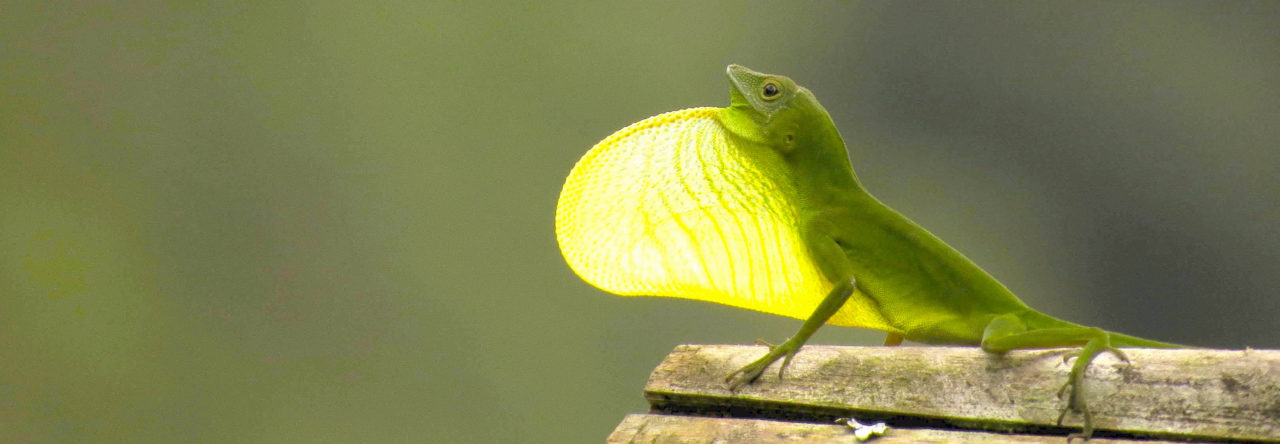
Tereza Jezkova helped kick off the anole festivities at Evolution 2016 with her talk entitled: “A peculiar case of hybridization with advantageous mtDNA introgression and lack of nuclear introgression in Caribbean anoles.” Along with a string of co-authors (Todd Castoe; Manuel Leal; Daren Card; Drew Schield; David Elzinga; Javier Rodríguez-Robles), Tereza has discovered that completely normal looking Anolis pulchellus populations in western Puerto Rico (and a bit elsewhere) harbor the DNA of the closely related A. krugi.
 What’s going on? Detailed examination revealed two interesting findings. First, this appears to be the result not of a single hybridization event, but minimally of 15 such events, all of them apparently quite recent. The krugi mtDNA has completely displaced the pulchellus mtDNA in these populations, and population genetic analyses rule out genetic drift as the cause. Puzzlingly, genomic analyses find absolutely no krugi nuclear DNA in these populations. The mtDNA is getting in, but not the nuclear genes. Natural selection must be at work, but how? Tereza suggested some sort of genetic mechanism that excludes the nuclear DNA of the introgressing species, somehow kicking it out, likening it to a phenomenon reported in frogs and some insects, but not in any amniotes.
What’s going on? Detailed examination revealed two interesting findings. First, this appears to be the result not of a single hybridization event, but minimally of 15 such events, all of them apparently quite recent. The krugi mtDNA has completely displaced the pulchellus mtDNA in these populations, and population genetic analyses rule out genetic drift as the cause. Puzzlingly, genomic analyses find absolutely no krugi nuclear DNA in these populations. The mtDNA is getting in, but not the nuclear genes. Natural selection must be at work, but how? Tereza suggested some sort of genetic mechanism that excludes the nuclear DNA of the introgressing species, somehow kicking it out, likening it to a phenomenon reported in frogs and some insects, but not in any amniotes.
- Evolution in Real Time on Lizard Island - March 23, 2025
- Spider Snags Adult Anolis osa - March 22, 2025
- An Homage to the Green Anoles of New Orleans - March 21, 2025


Pat Shipman
Could this be a case of female krugi being preferred to pulchellus? That would mean that the mtDNA of krugi would replace the pulchellis. Why preferred? what are the signals that attract males?
Skip Lazell
Very interesting! What a complication for everything from systematics to behavior…
Skip